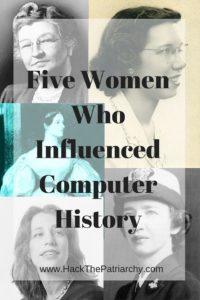0
Many involved in the field of computer science would never assume that the pioneer of programming was a woman who lived in England in the early 19th century. Ada Lovelace, the daughter of famed poet Lord Byron and Anne Isabella Milbanke, introduced new ideas that would soon serve as the backbone of computer technology and development.
Born in 1815, Lovelace was given something that many young women at the time could only dream of: an education. Given that her mother was a “strictly religious” and highly educated woman, she was soon trained in the field of science and mathematics. Lovelace studied under the greatest mathematicians at the time, including Scottish astronomer Mary Somerville. She grew to love the language of mathematics, and thrived in scientific environments.
Seen as an eclectic yet highly intelligent woman, she both intimidated and fascinated those in high society. Her personality was eccentric, abrasive, and “unconventional”. However, due to her knowledge and thirst for academic pursuits, she commanded the attention and respect of those around her. She represents exactly what women of all ages can look up to: a woman who goes against societal standards, pursues knowledge, and is absolutely unapologetic about it.
It was not until Lovelace met her friend, mathematician and inventor Charles Babbage, that she was able to realize her full potential as a pioneer of computer technology. Her contributions were partially based on Babbage’s previous invention of the analytical engine, the first computer. Using his research, she created her own idea of repeating instructions, letters, and numbers: a process known today as “looping.”
Lovelace’s work went largely unrecognized by the scientific community of the early 19th century, but her achievements became more widely celebrated following the technological revolution. Like many women in her time, she published many of her essays and studies under a pseudonym: A.L.L. However, her contributions to computer science are undeniable in the modern age. Lovelace encouraged women to question, explore, research. Ada Lovelace, the mother of modern computers, continues to serve as a role model nearly 185 years after her death.

 Women have played an important role in the world of computers from the beginning.
Women have played an important role in the world of computers from the beginning.